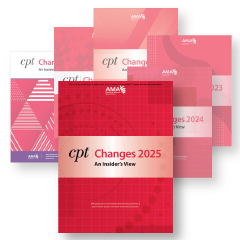by Michelle West, CPC CEMC CPMA CRC
Apr 1st, 2016 - Reviewed/Updated Aug 16th
Does your facility have a policy in place which addresses quality assurance? It is vital to ensure that regulatory and internal compliance plan policies are being followed by those who are responsible for internal chart audits.
Even before you review internal audits, here are some tips to ensure their quality:
-
Is your auditing staff kept abreast of changing policies and regulations with government payers and others?
-
Sometimes, those of us who have been auditing medical records for a long time forget to monitor and review changes to keep current. Subscribing to CMS' notifications and watching your local Medicare Administrative Contractor's (MAC) FAQ site is helpful.
-
Do your auditors and coders have a support system of other knowledgeable professionals who do the same type of work? An internal network or reputable resource such as the NAMAS forum are excellent sources. Within the NAMAS forum, you'll receive tips, answers, and resource guidelines for your hot topic internal documentation questions.
-
Do you require certifications such as CPC, CPMA, CEMC, RHIT, or other relevant credentials to ensure a solid knowledge base in the area of coding or auditing?
-
Most importantly, do you have internal policies regarding how your organization and MAC carrier interprets certain elements within documentation? For example, how does your organization address the documentation of "non-contributory" in the family history? A written policy and/or compliance plan is vital to ensure that all coders and auditors are on the same page.
Periodically, you should audit the personnel who are responsible for coding or auditing medical documentation in your organization. Depending upon the size of your organization and volume of coding and billing, you may choose to do these audits monthly or quarterly. These audits should be performed by someone experienced, qualified, and knowledgeable of the organization's internal as well as government and other payer's regulatory policies. Items that should be reviewed include: CPT, ICD-9/10 code and proper modifier usage. You'll also want to review coded or audited documentation in each area of service your provider(s) utilize. For example, whether your organization provides inpatient, outpatient, E&M, nursing facility, office procedures or surgeries, you'll want to review documentation for each applicable area to ensure all requirements are met. Additionally, if your organization has physician extenders who bill incident-to, teaching physician services, or split/shared services, these should also be audited to ensure accuracy. While creating quality standards, select an acceptable accuracy rate to monitor the accuracy of each coder/auditor. 90-95% is a common accuracy goal.
Lastly, commit to reeducation of your staff when necessary. Provide the proper feedback and support to help ensure that any errors are quickly addressed and remedied. Performing internal audits of your staff members is a key piece to the assurance that your internal policies, compliance plan, and governmental regulatory requirements are all clearly understood and being followed by each member of your organization.


 Quick, Current, Complete - www.findacode.com
Quick, Current, Complete - www.findacode.com